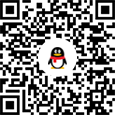
I was born in 1989, and received a bachelor degree in Electrical Engineering (Xi’an Jiaotong University) in 2012. I chose quantum optics and quantum information as my postgraduate research topic.
In 2012-2017, I studied in the department of Applied Physics as a Ph.D. student. My thesis topic was “Quantum Dynamics in Hybrid Quantum Circuit System With Longitudinal Coupling”. During 2015-2016, I studied in RIKEN, Japan [under the supervision of Prof. Franco Nori] as an international Ph.D.-joint student. In September 2017, I received my Ph.D. degree. During 2019-2020, I am a Post-Doc researcher at RIKEN (Japan).
Currently I am an associate professor in XJTU (China).






